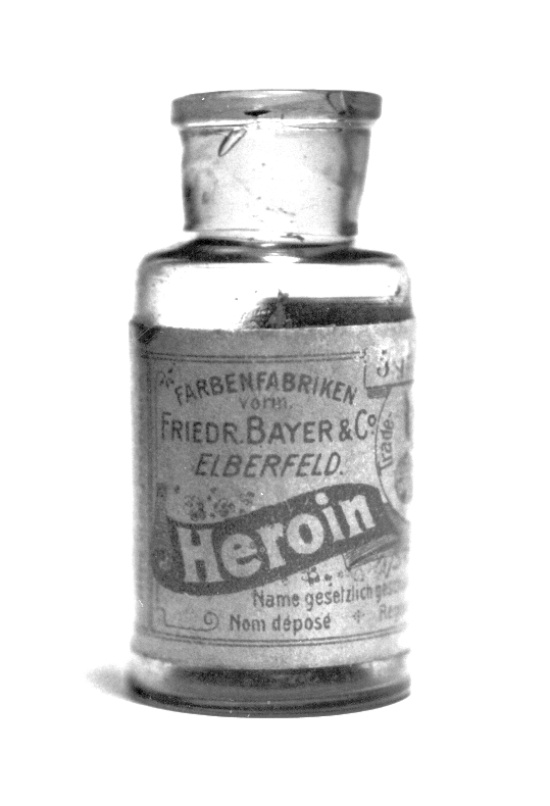“I’m jonesing for a coffee,” I told the barista recently. “Coming up, but you better be careful with that word,” she said, teasingly. “Cops come in here.”
Oh right. I had a vague memory that the slang for “craving” was somehow connected with heroin—which a quick online search confirmed. The most popular theory connects it with Great Jones Street in Manhattan’s NoHo district, “a former junkie hangout” according to the New York Daily News.
My maternal grandfather was a Jones. He was a Bible-loving and -fearing Welshman (indeed, he claimed to have learned English from the Good Book, having only spoken Welsh until his teens), who would have been appalled at the connotation of drugs with his name. Born in 1878, Iorwerth Jones was raised on a farm near Caersws in mid-Wales, and I doubt that he was familiar with any drug, legal or illegal, other than Bayer Aspirin. Certainly not heroin, which was first marketed—by Bayer!—in 1898. My granddad avoided coffee (because of the caffeine), and lived and died a teetotaler. No heroin for him.
Something about the barista’s throwaway comment stayed with me, along with thoughts of my fellow LoCO contributor James Faulk, who wrote about his heroin addiction vividly and intelligently here. Before I knew it, what passes for my mind had sent me down the rabbit hole of opioids and their ancient history.
According to archeologists, opium poppies have been grown in the Middle East for over 5,000 years, but it was only in 1804 that chemists had the equipment to analyze what is essentially dried poppy juice. Two alkaloids (compounds which yield a pH greater than 7.0 when dissolved in water) were found to give opium its narcotic and euphoric properties: codeine and morphine.
Seventy years later, Felix Hoffman, a Bayer chemist, synthesized diamorphine, a variant of naturally occurring morphine, which the company trademarked under the name Heroin. Someone apparently came up with the moniker, from “hero,” from the feeling of power and exaltation it gives. Bayer marketed their Heroin from 1898 to 1910 as an analgesic and as a cough-suppressant (the latter being important in an era when tuberculosis and pneumonia were commonplace).
Thought at the time to be non-addictive, heroin offered the promise of a useful substitute for morphine, which was known to be addictive. The 1910 magisterial 11th edition of Encyclopedia Britannica states: “In the cough of phthisis [tuberculosis of the lungs], minute doses [of morphine] are of service, but in this particular disease morphine is frequently better replaced by codeine or by heroin, which checks irritable coughs without the narcotism following upon the administration of morphine.”
A couple more hours of googling, wikipedia-ing and tracking down odd sources sent me to:
- the sad history of classifying heroin as a Schedule I substance for political, not medical, reasons;
- current heroin maintenance schemes in Germany, the Netherlands, the UK and Switzerland (“Switzerland, faced with one of the largest open drug scenes in Europe at the time [1994], started large-scale trials on the potential use of diamorphine as a maintenance drug. They proved diamorphine to be a viable maintenance drug which has shown equal or better rates of success than methadone in terms of assisting long-term users establish stable, crime-free lives”;
- the problem of adulteration (“Like most opioids, unadulterated heroin does not cause many long-term complications other than dependence and constipation. The average purity of street heroin in the UK varies between 30% and 50% and heroin that has been seized at the border has purity levels between 40% and 60%; this variation has led to people suffering from overdoses as a result of the heroin missing a stage on its journey from port to end user…”
- “tough on drugs” legislation preventing commonsense public health measures like needle-exchange programs.
All very depressing.
Which brings me back to illegal drugs in general, where my libertarian instincts kick in. Also, I’m a firm believer in, “If it doesn’t work, do something different.”
U.S. incarceration rates. The War on Drugs results in about one million incarcerations annually. [November Coalition/Public domain]
Can’t we just agree that Nixon’s 1971 “War on Drugs” has been an utter failure, even as it continues to devastate individuals, families and societies; and that the $50 billion a year spent on this war could be far better spent on a compassionate and blame-free policies of treatment, rehabilitation and maintenance?
###
Barry Evans gave the best years of his life to civil engineering, and what thanks did he get? In his dotage, he travels, kayaks, meditates and writes for the Journal and the Humboldt Historian. He sucks at 8 Ball. Buy his Field Notes anthologies at any local bookstore. Please.


CLICK TO MANAGE